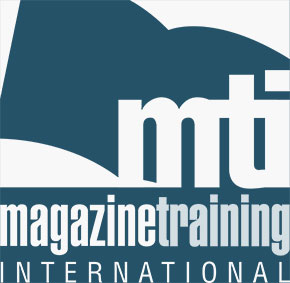
More than 5,000 miles — or 8,000 kilometers — separate Berlin, Germany and Denton, Texas, but newspapers based in the two cities are facing similar challenges as they work to build a sustainable future for their journalism and reduce their reliance on print revenue.
While the Denton Record-Chronicle and Die Tageszeitung, commonly known as taz, publish in different languages, have unique ownership structures, and serve different audiences, there are common themes and lessons that newspapers all over the world can learn from these two publications that have committed to reducing print frequency and growing their digital audience.
This week in Solution Set, we’re highlighting key takeaways from both taz and the Record-Chronicle, along with links to full case studies about each publication and resources to dig deeper into how news organizations are pursuing thoughtful print reduction strategies.
These are part of Beyond Print, a program led by The Lenfest Institute and American Press Institute that aims to guide four participating news organizations through their shift toward digital and features a number of guest speakers paving the way for digital sustainability.
We’ll be sharing more resources related to print reduction in the future, but if you would like to receive upcoming insights and updates about Beyond Print in your inbox, please complete this form. If a friend forwarded you this email, you can subscribe to Solution Set and catch up on past coverage here.
Here are the tips:
Create metrics for success
When taz made the decision in 2018 to work toward eliminating its daily print edition, the staff didn’t immediately determine a timeline for the shift. Instead, the team decided upon three conditions that must be met before it stops the presses:
- It must reach 30,000 subscriptions in a mixture of digital and weekly edition and 40,000 contributing to its voluntary payment model
- Products must be improved upon to support increased digital readership
- It has to have its internal processes organized so employees can best support the products and audiences
The paper’s leadership has made sure that its staff and readers know that these three conditions are the priorities and that the team is working toward a common goal.
“We had to learn it the hard way that it’s not useful to set and communicate a timeframe for the transformation because many believe that the point in time only has to be reached so everything will settle down,” CEO Aline Lüllmann said. “But we need all people on deck to make this transformation.”
Data informs decisions — and helps with staff buy-in
To get the taz staff on board with the transformation and show them that the organization still had a bright future, the paper’s former managing director started the transitional process by creating a model showing how taz could survive in 2022 with increased digital and weekly print subscriptions, but without its daily print paper.
The paper also began surveying its readership to better understand which products they valued and their likelihood to convert to a different product after daily print is discontinued.
by
Related posts
Magazine Training International’s mission is to encourage, strengthen, and provide training and resources to Christian magazine publishers as they seek to build the church and reach their societies for Christ.

